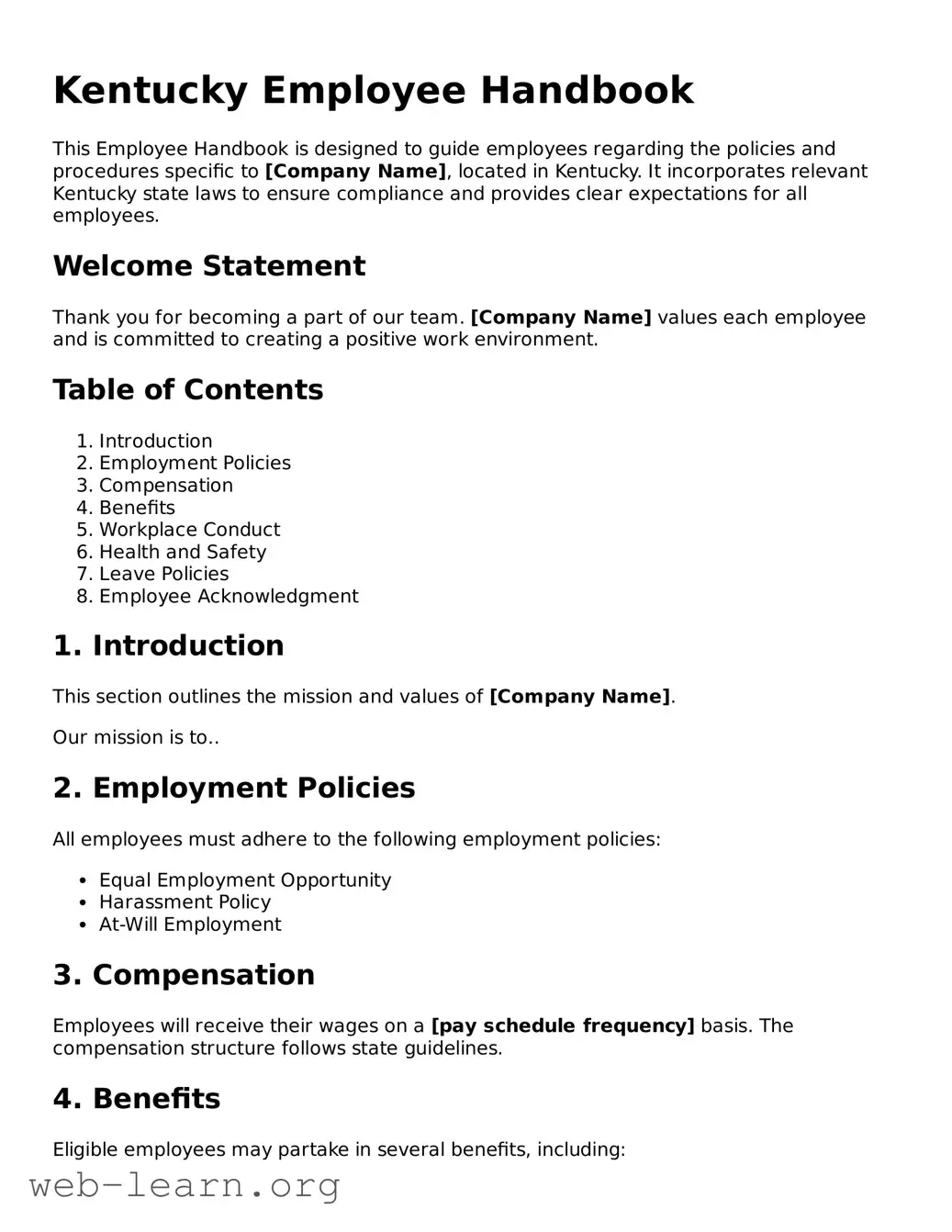Kentucky Employee Handbook
This Employee Handbook is designed to guide employees regarding the policies and procedures specific to [Company Name], located in Kentucky. It incorporates relevant Kentucky state laws to ensure compliance and provides clear expectations for all employees.
Welcome Statement
Thank you for becoming a part of our team. [Company Name] values each employee and is committed to creating a positive work environment.
Table of Contents
- Introduction
- Employment Policies
- Compensation
- Benefits
- Workplace Conduct
- Health and Safety
- Leave Policies
- Employee Acknowledgment
1. Introduction
This section outlines the mission and values of [Company Name].
Our mission is to..
2. Employment Policies
All employees must adhere to the following employment policies:
- Equal Employment Opportunity
- Harassment Policy
- At-Will Employment
3. Compensation
Employees will receive their wages on a [pay schedule frequency] basis. The compensation structure follows state guidelines.
4. Benefits
Eligible employees may partake in several benefits, including:
- Health insurance
- Retirement plans
- Paid time off
5. Workplace Conduct
To maintain a respectful workplace, all employees are expected to:
- Respect colleagues and management
- Maintain professionalism at all times
- Adhere to company policies and procedures
6. Health and Safety
Employee safety is a priority. Employees are encouraged to report unsafe conditions and follow all safety guidelines.
7. Leave Policies
Employees are entitled to various types of leave, in accordance with Kentucky law. These may include:
- Sick leave
- Family and Medical Leave
- Vacation time
8. Employee Acknowledgment
All employees are required to sign an acknowledgment form confirming they have received and understood this handbook.
